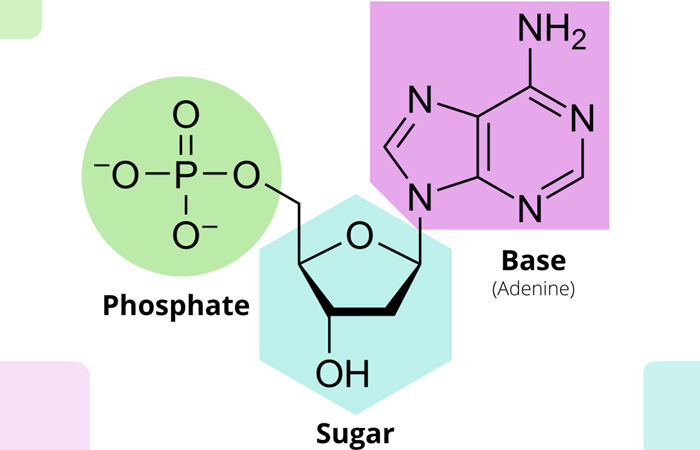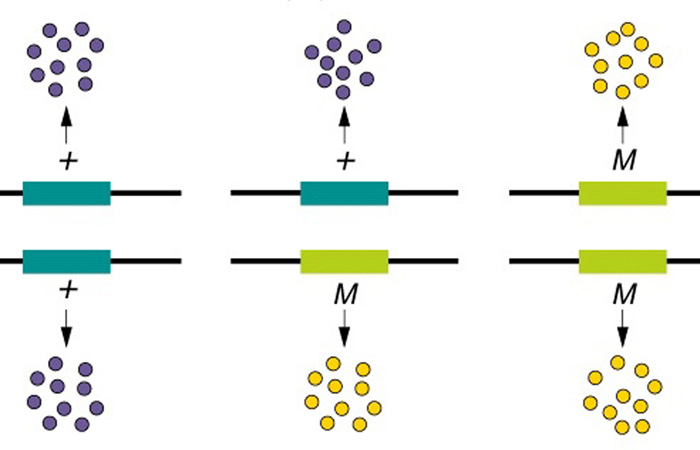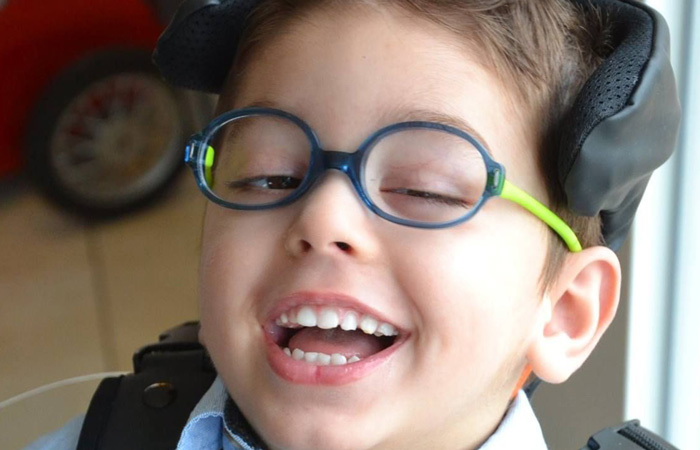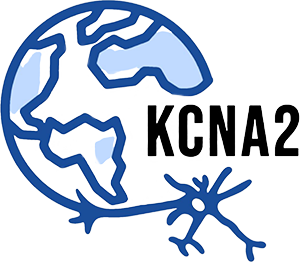What is KCNA2 Epilepsy
This is referred to as ‘gain of function,’
This is referred to as a ‘loss of function,’ and
This is referred to as a ‘mix of function.’
The Discovery of the KCNA2 Variation
The identification of the KCNA2 variation began with research of the voltage-gated potassium channels (VGKCs). These channels are transmembrane channels specific for potassium and sensitive to voltage changes in the cell’s membrane potential. Cells function by a process referred to as “action potential”. Action potential is the process whereby the cell sends an electric signal from the cell body down the axon to communicate with another cell. Neuroscientists use words such as a “spike” or an “impulse” for this process. After the signal is complete, potassium channels along with specific ion channels play a crucial role in returning the depolarized cell to its resting state. This stabilizes the membrane potential. When a cell is unable to return to a resting state, the neuron would be hyper-excitable resulting in symptoms such as ataxia and seizures.
Genetics and KCNA2
KCNA2 epilepsy is caused by a variation on the KCNA2 gene, located on chromosome 1p13.

Chromosomes
Chromosomes are located in the nucleus of human cells and carry the genetic information for each individual. Human body cells normally have 46 chromosomes in each cell. Pairs of human chromosomes, numbered from 1 through 22 are called autosomes. Additionally, there are sex chromosomes, which are designated X and Y (males have one X and one Y chromosome and females have two X chromosomes).
Genes
Each chromosome contains thousands of genes. Within the gene is a segment of DNA that gives the cells specific instructions for making proteins, the building blocks for everything in your body. Bones, teeth, eyes, hair, blood, and everything included in your body is make up of proteins. In the case of KCNA2, a variation in the gene occurs, resulting in an error in the code or instructions for a part of the gene sequence.


Nucleotides
Genes are made up of nucleotides. The genes carry the code for making the human body using sequences of nucleotides. There are approximately 3 billion nucleotides comprising a human’s DNA. In most cases of KCNA2, there is an error in just one of these 3 billion nucleotides, but it is in a location which codes for a critical protein.
Gain, Loss or Combination of Function Variation
Depending on where and what the specific error is, (which nucleotide is replaced or missing), the variation can result in the potassium channel having a “loss of function” (being closed more than it should be) or having a “gain of function” (being open more than it should be), or a combination of a gain and loss of function. Understanding whether a patient is gain, loss, or combination can have implications for a recommended treatment course, particularly as more targeted therapies are being developed.

Common Differences Between Phenotypes
DIFFERENCES BETWEEN GROUPS
| A- Gain of function | B- Loss of function | C- Combination gain/loss |
|---|---|---|
| Predominant generalized seizures | Predominant focal seizures | |
| Prominent sleep activation: Activation of epileptiform activity during non-REM sleep **raising concerns for ESES in some patients | ||
| Ataxia more severe | Ataxia less severe | Ataxia more severe |
| MRI- progressive loss of function | MRI- normal | MRI- progressive loss of function |
| Developmental outcomes more severe | Developmental outcomes less severe | Developmental outcomes more severe |
| Disruptions in voluntary muscle control | ||
| Often Neonatal-onset epilepsy | ||
| Associated with spastic quadriplegia, cerebellar atrophy, profound intellectual disability | ||
| Seizure onset infancy with myoclonic and absences | Slightly later onset of seizures around 12 months | Variations in seizure onset |
| Treatment option of 4-aminopyridine is offered | 4-aminopyrine is not offered due to loss of function | 4-aminopyrine is not offered due to loss of function |
KCNA2 and Seizures
The presentation of KCNA2 Developmental and Epileptic Encephalopathy is comprised of several neurological disorders in addition to severe and pharmacoresistant seizures. Nearly all of those affected by KCNA2 variation will experience significant seizures. This is most often the symptom that leads to genetic testing, especially if symptoms of seizures are resistant to medication.

What is a seizure?
Seizures appear as stiffening of the body (tonic) often associated with jerking and changes in breathing or heart rate. Multiple seizure types can occur and can change in frequency, duration, and type as the child develops. The seizures are usually quite frequent (many per day) and often difficult to treat.
Some medications used to control seizures often stop working.
Symptoms of a Tonic-Clonic (Grand Mal) Seizure
Aura
Tonic Activity
Clonic Activity
After the Seizure (Postictal Period)
What to Do If Someone Has a Tonic-Clonic (Grand Mal) Seizure
Witnessing a person having a tonic-clonic seizure can be upsetting, but it’s important to remember that most seizures resolve on their own after one to three minutes. To offer assistance:
- Protect the person from injury by helping them to the floor and clearing away furniture or other items. Do not attempt to hold the person still.
- Do not put anything in the person’s mouth. It is physically impossible to swallow one’s tongue, and putting things in the mouth may lead to injury.
- Time the seizure.
- A seizure lasting more than 5 minutes is an emergency. Call 911.
- Calm reassurance can be helpful to a person who is recovering from a seizure.
